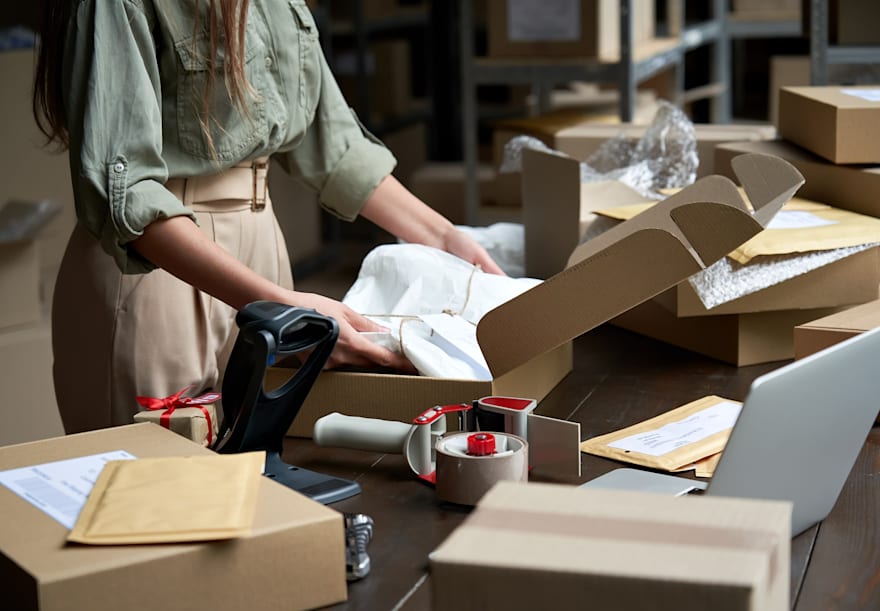The Art and Science of Packaging: More than Just a Container

Packaging is a fundamental piece of modern life, influencing consumer behavior, ensuring product safety, and playing a critical role in marketing strategies. From the moment a product is conceived, packaging considerations have the headlines of design, logistics, and 包裝服務 concurrence. This article delves into the all-round world of packaging, exploring its history, functions, materials, environmental impact, and future trends.
The of packaging goes to ancient times when humans used natural materials like leaves, animal templates, and stiched grasses to carry and store food. The advent of pottery and glass brought new possibilities for storage and transportation, making it much easier to preserve goods for longer periods. The industrial innovation in the 19th century marked a significant turning point with the introduction of mass-produced glass wine bottles, jar can lids, and later, plastic containers. Each of these innovations responded to the increasing needs of society and advances in technology.
Protection: One of the primary purposes of packaging is to protect the product from physical damage, contamination, and spoilage. Effective packaging ensures that goods reach consumers in perfect condition. Efficiency: Particularly important for food and prescription drugs, packaging helps extend the corner life of products by shielding them from environmental factors such as moisture, light, and oxygen.
Convenience: Packaging enhances the usability of a product, offering features such as resealable zippers, easy-pour spouts, and single-serve portions that cater to modern, on-the-go lifestyles. Communication: Through labels and branding, packaging conveys essential information about the product, including ingredients, usage instructions, and safety warnings. It also plays a pivotal role in marketing by attracting consumers and differentiating products on congested shelves. Sustainability: As environmental awareness grows, packaging is increasingly designed to be recyclable, biodegradable, or made from renewable resources. Sustainable packaging aims to attenuate the environmentally friendly presence while maintaining functionality.
The decision of materials in packaging is diverse, each with its unique advantages and drawbacks: Glass: Known for its impermeability and inertness, glass is extremely good for conserving food and refreshments. However, its fragility and weight are significant drawbacks. Plastic: Versatile and lightweight, plastic is used extensively in packaging. Advances in plastic science have led to the development of various types of pouches suited for different applications. However, plastic waste postures severe environmental challenges, forcing a push towards more sustainable alternatives.
Metal: Metals like aluminum and steel are used for can lids and foils because of the strength and capacity protect contents from light and air. Recycle metal packaging is efficient and widely practiced. Paper and Cardboard: These materials are renewable, biodegradable, and easily recyclable, making them popular options for a range of products from cereal boxes to shipping cartons. Innovations in paper technology continue to enhance their durability and protective qualities. Biodegradable Materials: Emerging materials such as bioplastics and plant-based fibers are gaining footing as eco-friendly alternatives. These materials are created to break down more readily in the environment, reducing long-term waste.
The environmental impact of packaging is a critical issue, given the global focus on sustainability. The lifecycle of packaging materials, from production to discretion, affects the earth in various ways. Key concerns include: Resource Depletion: The extraction and processing of raw materials for packaging, such as petroleum for plastic or timber for paper, consume natural resources and energy. Waste Management: Improper discretion of packaging waste leads to carbon dioxide and cover. Plastic waste, in particular, can take more than 100 years to decompose, posing a threat to wild animals and ecosystems.
Carbon dioxide Presence: The production, transportation, and discretion of packaging contribute to greenhouse gas emissions. Efforts to reduce the carbon dioxide presence include optimizing packaging design to use fewer materials and increase efficiency. Recycle and Recycling: Effective recycle systems can mitigate some of the environmental impacts of packaging. However, the success of recycle programs depends on consumer engagement and the facilities available to process different types of materials. The future of packaging is designed by technological advancements, consumer preferences, and regulatory changes. Key trends include:
Smart Packaging: Incorporating technologies such as QR codes, NFC tags, and sensors, smart packaging offers enhanced functionality. It can provide real-time information about product taste, track supply stringed logistics, and engage consumers with interactive content. Sustainable Innovations: The push for sustainability is driving the development of new materials and packaging designs. Innovations like edible packaging, compostable materials, and zero-waste packaging systems are gaining footing. Personalization: Advances in digital printing and customization allow brands to create personalized packaging that resonates with individual consumers. This trend is very prominent in the luxury and e-commerce sectors.
Regulatory Concurrence: Governments around the world are implementing stricter regulations to reduce packaging waste and promote recycle. Companies must conform to these regulations while maintaining the appeal and functionality of their packaging. Minimalism: There is a growing trend towards smart packaging, which uses fewer materials and simpler designs. This process not only reduces environmental impact but also aligns with consumer preferences for straightforward, no-frills products.
Packaging is a dynamic field that features science, engineering, design, and marketing. Its advancement shows the changing needs and values of society, from ensuring product safety to addressing environmental concerns. As technology advances and sustainability becomes a central focus, the future of packaging promises to be innovative, efficient, and increasingly eco-friendly. Understanding the complexities and trends in packaging helps businesses, consumers, and policymakers make informed decisions that benefit both the economy and the planet.
+ There are no comments
Add yours